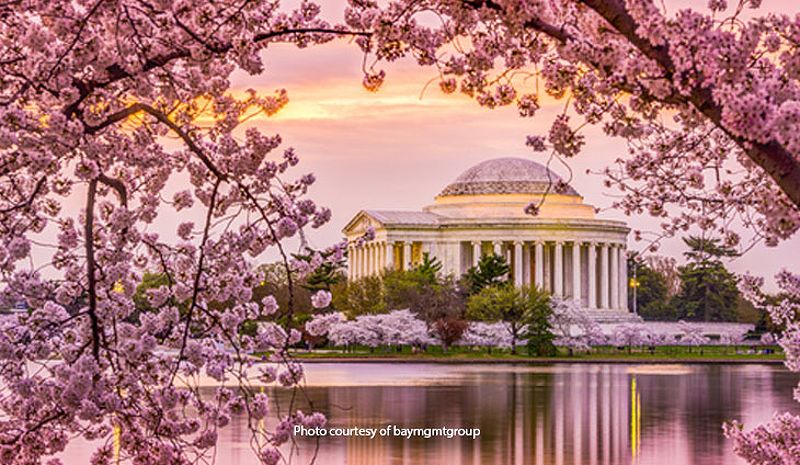Washington, D.C. is experiencing the effects of climate change as warmer temperatures shift the timing of the annual cherry blossom bloom, attracting over a million visitors each year. Rising water levels in the Tidal Basin also pose challenges for the preservation of cherry trees.
Climate Change Impacts Cherry Blossom Season in Washington, D.C.
Washington, D.C., renowned for its stunning cherry blossoms, is experiencing the effects of climate change as warmer temperatures shift the timing of the annual bloom. This natural spectacle, attracting over a million visitors each year, now begins around mid-March, approximately six days earlier than it did a century ago.
This year, due to the warmest winter on record in the United States, the cherry blossom peak occurred on March 17. This early bloom has become a tangible example of how climate change is impacting the nation's capital, according to Mike Litterst, head of communications for the National Mall and Memorial Parks.
The warmer weather not only affects the timing of the bloom but also leads to higher water levels in the Tidal Basin, where cherry trees are situated. The overflow from the nearby Potomac River, influenced by rising sea levels, sometimes submerges the base of the cherry trees under several inches of water. To address this issue, the park service plans to undertake significant construction work later this year to enhance an old seawall that currently fails to hold back the water effectively.
Construction Plans and Tree Preservation
Unfortunately, this construction will result in the removal of approximately 300 trees, including 158 cherry trees. While this decision has not been taken lightly, the park service assures that once the seawall work is completed, 455 trees, including 270 cherry trees, will be replanted. This measure is necessary to ensure the preservation of cherry trees in the area. Leaving things as they are would eventually lead to the loss of all cherry trees in the affected region.
The cherry blossoms in Washington, D.C., hold a special significance as they were gifted by the mayor of Tokyo in 1912 as a symbol of friendship. The National Mall now boasts around 3,700 cherry trees, predominantly Yoshino variety with their enchanting pale pink blossoms.
This year's bloom cycle was notably shorter, taking only 15 days from the appearance of the first cherry buds until full bloom, compared to the previous average of 26 days. The early and abbreviated bloom not only impacts travel plans for visitors but also raises concerns about the potential consequences for pollinating insects, as the blossoms may appear before these vital insects are active.
Rising Water Levels and Seawall Construction
Litterst notes that the rising water levels in the Tidal Basin are the most striking change he has observed during his tenure. Previously, certain areas along the inlet would flood once a month at high tide, but now they are inundated with water every week, if not daily. The poorly constructed seawall, over a century old, has settled in some places by approximately five feet, while water levels in the basin have risen by one foot.
The planned construction to fortify the seawall is expected to take three years and cost approximately $113 million. The new structure will allow for future adjustments and additional height to accommodate potential further increases in water levels.
The impact of climate change on the cherry blossom season and the encroaching water levels in Washington, D.C., have left many residents saddened. Caitlin Cotter Coillberg, a minister in suburban Washington, expresses her anticipation for the repaired seawall and the restoration of the cherry blossoms' beauty.
Preserving Tradition and Future Generations
In addition to the construction plans, Washingtonians also mourn the loss of a beloved cherry tree known as 'Stumpy,' a quirky and oddly shaped tree that has become a star of the annual cherry blossom celebrations. While the other trees will be turned into mulch, cuttings will be taken from Stumpy to propagate new trees with its genetic heritage, even if they do not share its unique silhouette.
The changing climate's impact on the cherry blossom season serves as a stark reminder of the urgent need for action to mitigate and adapt to climate change. Preserving this cherished tradition in Washington, D.C., requires addressing the challenges posed by rising temperatures and sea levels to ensure the continued beauty of the cherry blossoms for future generations.

